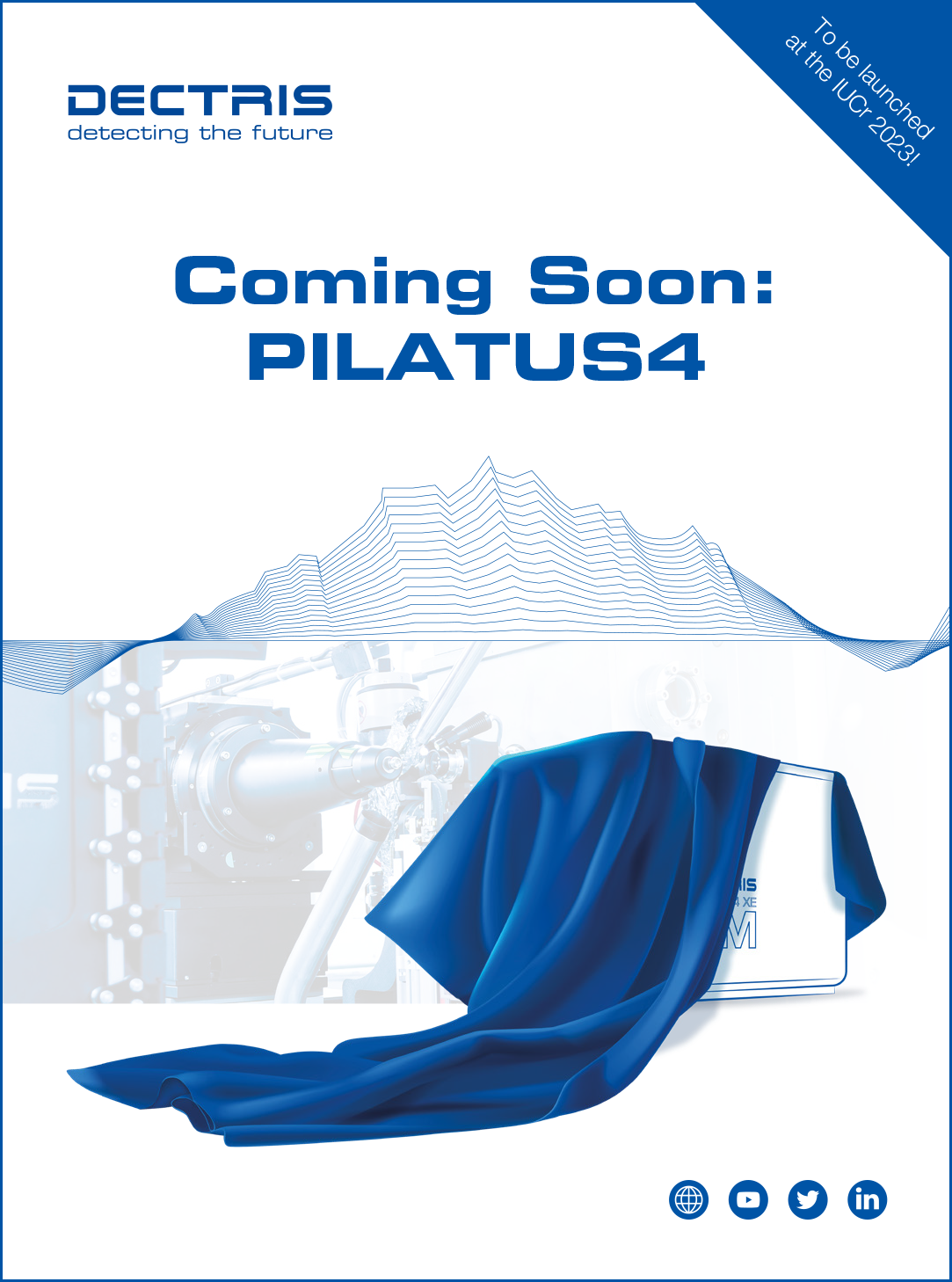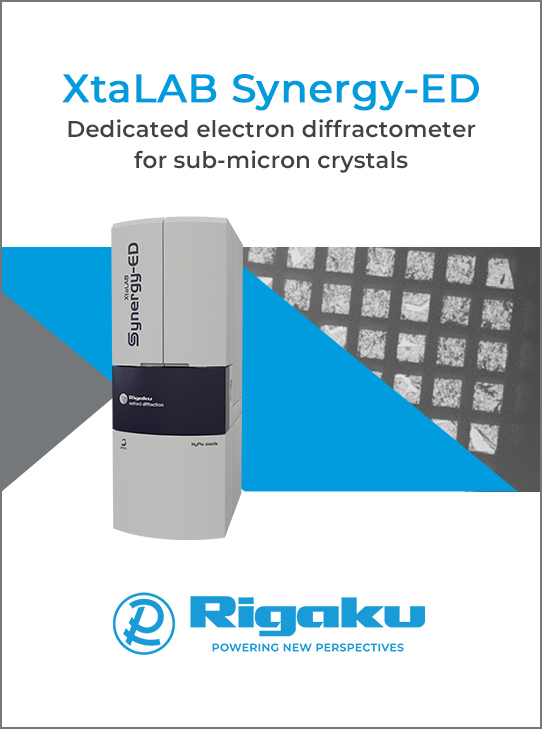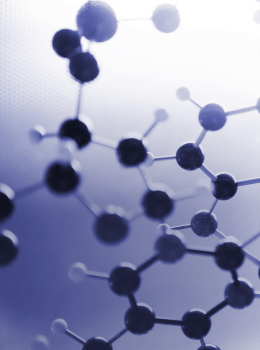


Editorial
AlphaFold and the future of structural biology
![Thumbnail [Thumbnail]](https://www.iucr.org/__data/assets/image/0009/156861/me6231thumbnail.png)
The landscape of structural biology changed dramatically in 2020 with the emergence of the second version of the AlphaFold protein structure-prediction program (Jumper et al., 2021). Since then, structural biologists, and the many other scientists whose research is informed by knowledge of macromolecular structure, have scrambled to adapt. Much of the hype in both the scientific literature and popular media has indeed been justified: the current version of AlphaFold is astonishingly powerful, and it would be foolish not to make full use of it. Unfortunately, recent anecdotal reports suggest that some scientists reviewing grants and papers believe that AlphaFold is so powerful that it has made experimental structural biology redundant. There is clearly still a need for education about the strengths and weaknesses of current machine-learning methods for protein structure prediction, and the essential role that remains for experiment.
The advance in AlphaFold was unveiled at CASP14, the 14th edition of the Critical Assessment of protein Structure Prediction. For the first time in the history of CASP, the best models of protein targets were judged as being competitive with experimental structures in their backbone accuracy, almost independent of the difficulty of the modelling problem (Kryshtafovych et al., 2021). Since then, other powerful machine-learning algorithms for structure prediction have emerged, including the first (Baek et al., 2021) and second (Baek et al., 2023) versions of RoseTTAFold, ESMfold (Lin et al., 2023) and OpenFold (Ahdritz et al., 2022), an open-source reimplementation of AlphaFold including training code.
Within half a year of CASP14, the AlphaFold algorithm was made freely available through Google Colab notebooks, including a community-developed version (Mirdita et al., 2022). Pre-calculated structures of a large collection of proteins from important genomes were made available through the AlphaFold Database at the European Bioinformatics Institute (Tunyasuvunakool et al., 2021), which has since been expanded to include about 200 million proteins representing most of the UniProt database (Varadi et al., 2022).
Structural biologists quickly embraced the advantages that these models bring (Perrakis & Sixma, 2021), including insights into improved construct design, the generation of compelling hypotheses about interacting proteins or domains, and the acceleration of structure solution by molecular replacement (Millán et al., 2021) for crystallography or docking for electron cryo-microscopy (cryo-EM). A particularly notable example was integrative modelling of the nuclear pore complex by combining AlphaFold (Jumper et al., 2021) and RoseTTAFold (Baek et al., 2021) models with cryoelectron tomography and complementary data (Mosalaganti et al., 2022).
Most structural biologists are aware that the models are not actually as accurate as experimental structures. The backbone accuracy measured in CASP does not ensure the accuracy of all coordinates including side chains. An objective evaluation of how well different models explain experimental diffraction data showed that experimental structures from alternative crystal forms (in spite of different crystal-packing interactions) are generally better than AlphaFold models (Terwilliger et al., 2023). It has also been reported that AlphaFold models perform less well than experimental structures as targets for the computational docking algorithms used in drug design (Karelina et al., 2023).
It is also important to remember that multi-domain targets in CASP are subdivided into ‘evaluation units’ when predictors fail to predict their relative orientations (Kinch et al., 2021). Many AlphaFold models, including those submitted to CASP14, indeed have large errors in the relative orientations of domains.
The authors of AlphaFold acknowledge its limitations, and one of the great strengths of AlphaFold is its ability to assess its own accuracy: the predicted aligned error (PAE) matrix presents clear warnings when relative domain orientations are uncertain, and the predicted value of the local distance difference test or LDDT (Mariani et al., 2013) statistic (pLDDT) correlates rather well with the actual local model accuracy (Jumper et al., 2021).
The most serious limitations of AlphaFold and other machine-learning algorithms for structure prediction arise from the fact that they are based on learning patterns and know almost nothing about physics and chemistry. They can generate a single structure that is most consistent with the patterns they know about, but not a collection of alternative conformations that are influenced in their relative stability by factors such as pH, temperature or the binding of ions, other ligands or other proteins. For the foreseeable future, we will certainly need experiments to assess these effects. In addition, variants with amino-acid substitutions will satisfy the same patterns, even though such substitutions may destabilize the protein or change its conformation. Nonetheless, other algorithms exist that can use the AlphaFold model to predict the effects of variants on stability as accurately as with an experimental structure (Akdel et al., 2022).
One of the most powerful aspects of experimental structural biology is the discovery of the unexpected, including the discovery of obligate cofactors and specific metal ions in structures, as well as structurally important post-translational modifications, including various kinds of spontaneous chemical cross-linking such as is observed in fluorescent proteins. Crystallography and cryo-EM will also give an answer to the question of stoichiometry of a homomer (or heteromer), while AlphaFold, despite valuable developments in multimer prediction (Evans et al., 2022), still requires hypothetical stoichiometries to be tested.
Papers describing macromolecular structure-prediction algorithms and their use are welcome in the relevant IUCr journals: Structural Biology (Acta Crystallographica Section D), Structural Biology Communications (Acta Crystallographica Section F) and IUCrJ. For new structures, authors should bear in mind that the use of predicted structures as molecular-replacement models has already become standard practice, and papers describing the resulting structures must make new contributions to our biological understanding.
The field of structural biology and the nature of its challenges has, for the second time this century, undergone a major change. The resolution revolution in cryo-EM has allowed previously intractable systems to be studied at resolutions permitting ‘de novo’ model building, but it has not made X-ray crystallography or NMR spectroscopy redundant (Kühlbrandt, 2014). In the same way, the major leap in structure prediction that AlphaFold has spawned does not mean that experimental techniques have suddenly become meaningless. As other commentators have said (Perrakis & Sixma, 2021; Kleywegt & Velankar, 2022), this change is accelerating progress and bringing us more power to address deeper questions, and we should embrace the new possibilities.
References
Ahdritz, G., Bouatta, N., Kadyan, S., Xia, Q., Gerecke, W., O’Donnell, T. J., Berenberg, D., Fisk, I., Zanichelli, N., Zhang, B., Nowaczynski, A., Wang, B., Stepniewska-Dziubinska, M. M., Zhang, S., Ojewole, A., Guney, M. E., Biderman, S., Watkins, A. M., Ra, S., Lorenzo, P. R., Nivon, L., Weitzner, B., Ban, Y.-E. A., Sorger, P. K., Mostaque, E., Zhang, Z., Bonneau, R. & AlQuraishi, M. (2022). bioRxiv, 2022.11.20.517210.
Akdel, M., Pires, D. E. V., Pardo, E. P., Jänes, J., Zalevsky, A. O., Mészáros, B., Bryant, P., Good, L. L., Laskowski, R. A., Pozzati, G., Shenoy, A., Zhu, W., Kundrotas, P., Serra, V. R., Rodrigues, C. H. M., Dunham, A. S., Burke, D., Borkakoti, N., Velankar, S., Frost, A., Basquin, J., Lindorff-Larsen, K., Bateman, A., Kajava, A. V., Valencia, A., Ovchinnikov, S., Durairaj, J., Ascher, D. B., Thornton, J. M., Davey, N. E., Stein, A., Elofsson, A., Croll, T. I. & Beltrao, P. (2022). Nat. Struct. Mol. Biol. 29, 1056–1067.
Baek, M., Anishchenko, I., Humphreys, I. R., Cong, Q., Baker, D. & DiMaio, F. (2023). bioRxiv, 2023.05.24.542179.
Baek, M., DiMaio, F., Anishchenko, I., Dauparas, J., Ovchinnikov, S., Lee, G. R., Wang, J., Cong, Q., Kinch, L. N., Schaeffer, R. D., Millán, C., Park, H., Adams, C., Glassman, C. R., DeGiovanni, A., Pereira, J. H., Rodrigues, A. V., van Dijk, A. A., Ebrecht, A. C., Opperman, D. J., Sagmeister, T., Buhlheller, C., Pavkov-Keller, T., Rathinaswamy, M. K., Dalwadi, U., Yip, C. K., Burke, J. E., Garcia, K. C., Grishin, N. V., Adams, P. D., Read, R. J. & Baker, D. (2021). Science, 373, 871–876.
Evans, R., O’Neill, M., Pritzel, A., Antropova, N., Senior, A., Green, T., Žídek, A., Bates, R., Blackwell, S., Yim, J., Ronneberger, O., Bodenstein, S., Zielinski, M., Bridgland, A., Potapenko, A., Cowie, A., Tunyasuvunakool, K., Jain, R., Clancy, E., Kohli, P., Jumper, J. & Hassabis, D. (2022). bioRxiv, 2021.10.04.463034.
Jumper, J., Evans, R., Pritzel, A., Green, T., Figurnov, M., Ronneberger, O., Tunyasuvunakool, K., Bates, R., Žídek, A., Potapenko, A., Bridgland, A., Meyer, C., Kohl, S. A. A., Ballard, A. J., Cowie, A., Romera-Paredes, B., Nikolov, S., Jain, R., Adler, J., Back, T., Petersen, S., Reiman, D., Clancy, E., Zielinski, M., Steinegger, M., Pacholska, M., Berghammer, T., Bodenstein, S., Silver, D., Vinyals, O., Senior, A. W., Kavukcuoglu, K., Kohli, P. & Hassabis, D. (2021). Nature, 596, 583–589.
Karelina, M., Noh, J. J. & Dror, R. O. (2023). bioRxiv, 2023.05.18.541346.
Kinch, L. N., Schaeffer, R. D., Kryshtafovych, A. & Grishin, N. V. (2021). Proteins, 89, 1618–1632.
Kleywegt, G. J. & Velankar, S. (2022). IUCrJ, 9, 399–400.
Kryshtafovych, A., Schwede, T., Topf, M., Fidelis, K. & Moult, J. (2021). Proteins, 89, 1607–1617.
Kühlbrandt, W. (2014). Science, 343, 1443–1444.
Lin, Z., Akin, H., Rao, R., Hie, B., Zhu, Z., Lu, W., Smetanin, N., Verkuil, R., Kabeli, O., Shmueli, Y., dos Santos Costa, A., Fazel-Zarandi, M., Sercu, T., Candido, S. & Rives, A. (2023). Science, 379, 1123–1130.
Mariani, V., Biasini, M., Barbato, A. & Schwede, T. (2013). Bioinformatics, 29, 2722–2728.
Millán, C., Keegan, R. M., Pereira, J., Sammito, M. D., Simpkin, A. J., McCoy, A. J., Lupas, A. N., Hartmann, M. D., Rigden, D. J. & Read, R. J. (2021). Proteins, 89, 1752–1769.
Mirdita, M., Schütze, K., Moriwaki, Y., Heo, L., Ovchinnikov, S. & Steinegger, M. (2022). Nat. Methods, 19, 679–682.
Mosalaganti, S., Obarska-Kosinska, A., Siggel, M., Taniguchi, R., Turoňová, B., Zimmerli, C. E., Buczak, K., Schmidt, F. H., Margiotta, E., Mackmull, M.-T., Hagen, W. J. H., Hummer, G., Kosinski, J. & Beck, M. (2022). Science, 376, eabm9506.
Perrakis, A. & Sixma, T. K. (2021). EMBO Rep. 22, e54046.
Terwilliger, T. C., Liebschner, D., Croll, T. I., Williams, C. J., McCoy, A. J., Poon, B. K., Afonine, P. V., Oeffner, R. D., Richardson, J. S., Read, R. J. & Adams, P. D. (2023). bioRxiv, 2022.11.21.517405.
Tunyasuvunakool, K., Adler, J., Wu, Z., Green, T., Zielinski, M., Žídek, A., Bridgland, A., Cowie, A., Meyer, C., Laydon, A., Velankar, S., Kleywegt, G. J., Bateman, A., Evans, R., Pritzel, A., Figurnov, M., Ronneberger, O., Bates, R., Kohl, S. A. A., Potapenko, A., Ballard, A. J., Romera-Paredes, B., Nikolov, S., Jain, R., Clancy, E., Reiman, D., Petersen, S., Senior, A. W., Kavukcuoglu, K., Birney, E., Kohli, P., Jumper, J. & Hassabis, D. (2021). Nature, 596, 590–596.
Varadi, M., Anyango, S., Deshpande, M., Nair, S., Natassia, C., Yordanova, G., Yuan, D., Stroe, O., Wood, G., Laydon, A., Žídek, A., Green, T., Tunyasuvunakool, K., Petersen, S., Jumper, J., Clancy, E., Green, R., Vora, A., Lutfi, M., Figurnov, M., Cowie, A., Hobbs, N., Kohli, P., Kleywegt, G., Birney, E., Hassabis, D. & Velankar, S. (2022). Nucleic Acids Res. 50, D439–D444.
This article was originally published in Acta Cryst. (2023). D79, 556–558; Acta Cryst. (2023). F79, 166–168; and IUCrJ (2023). 10, 377–379.
Copyright © - All Rights Reserved - International Union of Crystallography







